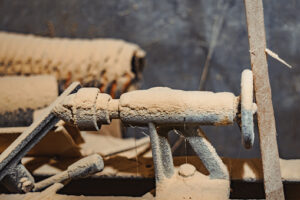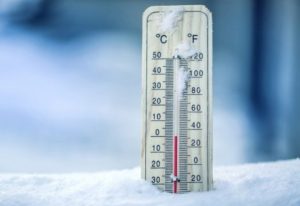
With warmer temps experienced nationwide this summer and fall, you may wonder if winter will be delayed. But colder weather is definitely coming, and with it comes a warning for manufacturers: The potential for dust explosions increases during winter.
What causes a combustible dust explosion?
According to OSHA (Occupational Health and Safety Administration), “A dust explosion occurs when a confined and concentrated combustible dust cloud comes into contact with an ignition source. A primary explosion is the first point where an explosion occurs and is often an isolated incident. A secondary explosion occurs when the primary explosion pressure disturbs dust that has collected in the workplace, resulting in a much more extensive explosion.”
Over time, dust created from manufacturing processes accumulates on the machinery, high surfaces and rafters, floors, and even on HVAC systems and in ductwork. If not properly cleaned and disposed of, the combustible dust and building’s oxygen provides dangerous fuel that can quickly ignite.
Why are combustible dust explosions more likely to occur in winter?
In addition to the dust, oxygen, and ignition source that must be present for a dust explosion, there are certain conditions that lend to the likelihood of incident during colder months.
 Lack of Ventilation
Lack of Ventilation
When the heating system is running during the winter, the building’s occupants are likely to keep doors and windows closed to conserve heat. In warmer weather, bay doors or building windows might be open to let in fresh air, and fans running to maintain a cool airflow. This extra airflow can keep dust levels at a minimum and reduce the hazard of a dust explosion. In winter, the lack of extra ventilation may allow dust levels to increase.
Low Humidity Levels
Humidity levels are lower in winter, as cold air holds less moisture than warm air. If a building uses a forced-air heating system, the air’s humidity level becomes even lower due to water evaporation (water vapor burning out). Lower humidity levels means dryer dust, making it easier for dust particles to disperse. Lower humidity also lowers the temperature required for an ignition.
Improper Cleaning Techniques
Common housekeeping practices in manufacturing facilities may rely on water. But when temperatures drop below freezing, cleaning with water is not always an option. Depending on the facility, cleaning practices also tend to be less frequent in cold weather. The (combustible) dust is either undisturbed or accumulates until water-based cleaning can be used again. Facility managers may turn to alternate cleaning techniques, that unknowingly, may be hazardous to use around combustible dust! One of those techniques is using compressed air. Compressed air is not a recommended dust cleaning option– regardless of season– as it creates a dangerous dust cloud!
In Summary: This video states it well
This video provided by the CSB (U.S. Chemical Safety and Hazard Investigation Board) is a great video to share with your facility management and life safety staff:
To safely clean and rid your facility of combustible dust during winter, contact a professional industrial cleaning company whose technicians are experienced, knowledgeable, and trained in how to clean combustible dust.
Hughes Environmental technicians are OSHA-trained and experienced in cleaning combustible dust. Hughes Environmental uses equipment approved for combustible dust cleaning, such as intrinsically safe vacuums and grounded hoses.
For a free estimate or to schedule a combustible dust cleaning for your facility, email Hughes Environmental or call: 888.845.3952.

